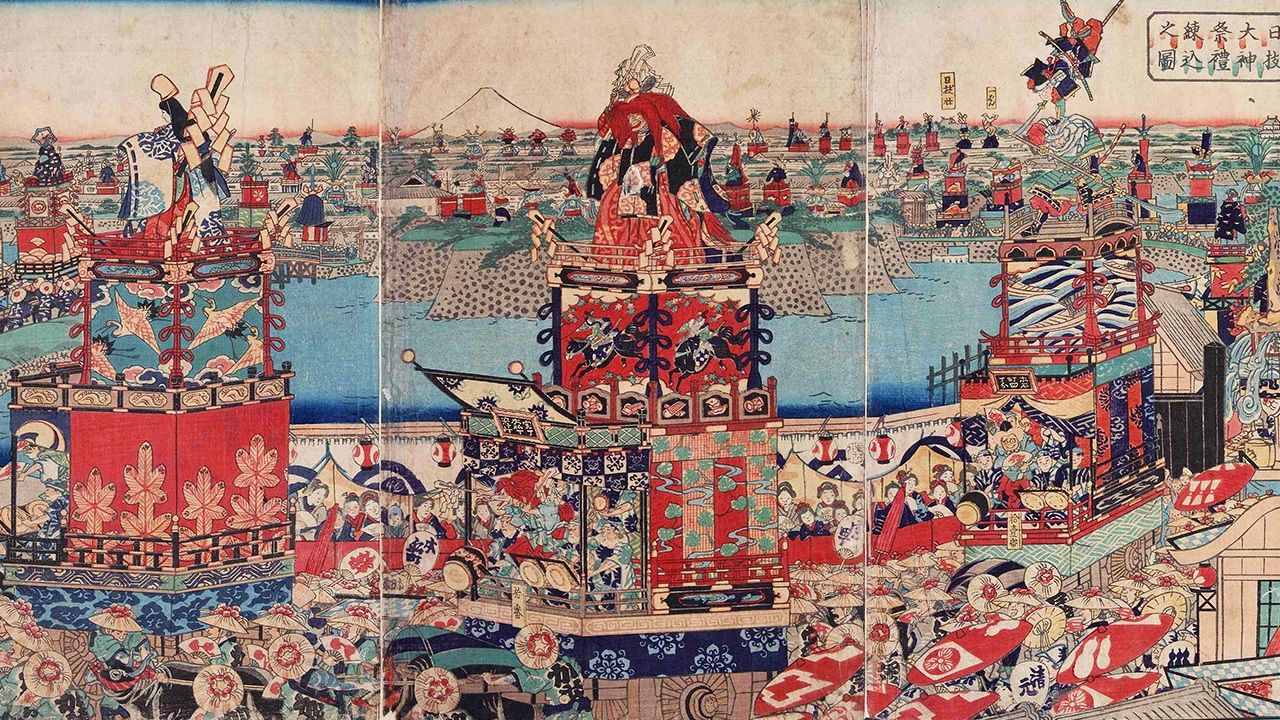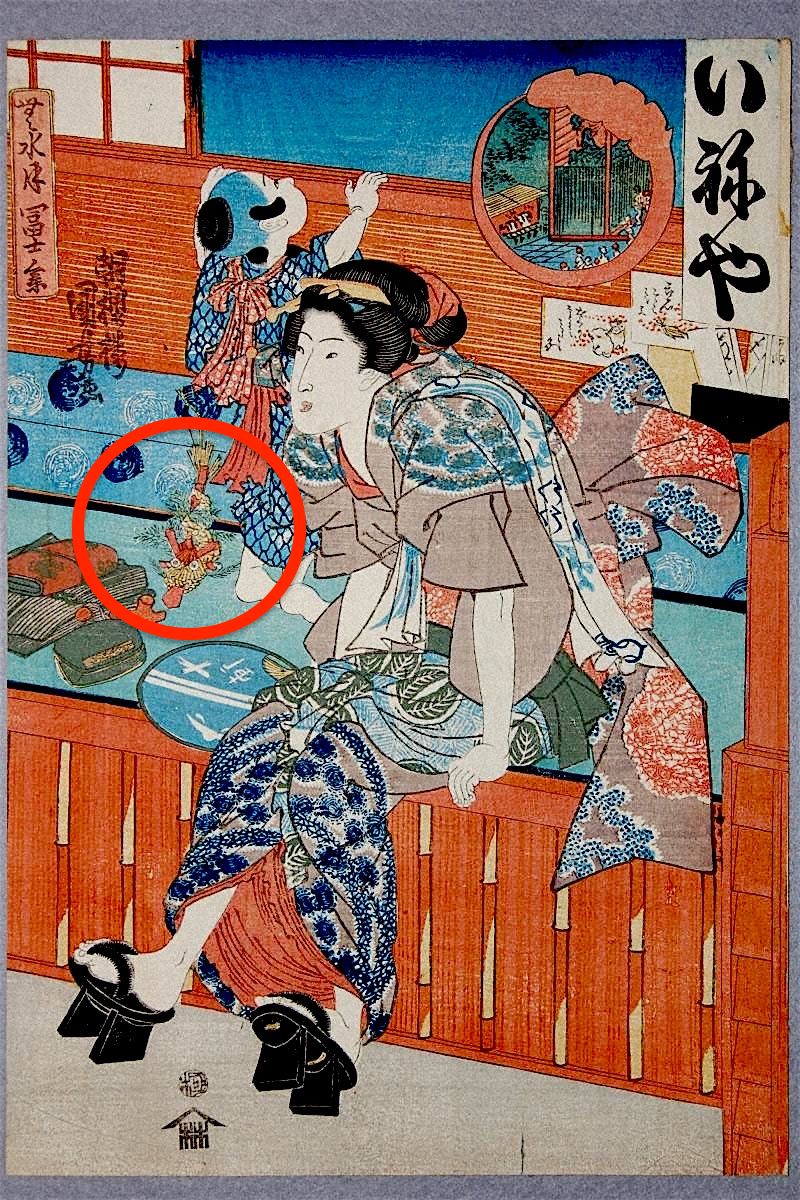
Japanese Traditional Annual Events
Minazuki: Climbing Mini Mount Fujis, Edo Eel, and Other June Traditions
Culture Lifestyle Society- English
- 日本語
- 简体字
- 繁體字
- Français
- Español
- العربية
- Русский
Worship of Mount Fuji
The prominence of high-rise buildings in the Tokyo metropolitan area almost completely obscures ground-level views of Mount Fuji today. In the past, though, the mountain was prominent on the horizon, giving rise to different Fujimizaka, or “Fuji-viewing slopes,” in neighborhoods in and around the capital. Along with being appreciated for its aesthetic beauty, the mountain was venerated by religious associations called Fujikō that flourished in the Edo period (1603–1868).
Fujikō considered ascending Mount Fuji an important religious rite and sponsored annual pilgrimages to the mountain. Not all members could make these excursions, leading to some local associations constructing replica Mount Fujis called fujizuka. The mounds were often made with volcanic rocks and soil from the mountain and stood several meters high.
On the old lunar calendar, June 1 marked the start of the climbing season on Mount Fuji. Fujikō members and others who were unable to travel to the mountain would pay their respects by ascending fujizuka. Shrines associated with Mount Fuji commonly offered visitors small amulets made from wheat straw shaped into the form of a snake, which were believed to protect households from disease and other calamities.

The Takada Fuji was the first fujizuka constructed in Edo (today Tokyo), shown here in Utagawa Hiroshige’s Ehon Edo miyage. The mound now stands on the grounds of the Mizuinari Shrine in Shinjuku. (Courtesy National Diet Library)
A number of fujizuka survive to this day, including the Shinagawa Fuji at Shinagawa Shrine, the Otowa Fuji at the temple Gokokuji, and the Sendagaya Fuji at Hatonomori Hachiman Shrine, along with several in neighboring prefectures.

A snake-shaped mugiwaraja charm (circled in red) in the print Visiting Fuji in June by Utagawa Kuniyoshi. (Courtesy Adachi City Museum)
Edo Festivals
By traditional reckoning, June was the start of the summer festival season in Japan. Edo was home to a number of major shrine celebrations, including the so-called three great matsuri, the Sannō, Kanda, and Fukagawa (or Tomioka) festivals. The Sannō was perhaps the grandest of these for its connection to the ruling Tokugawa regime. The festival celebrated the deity Sannō Gongen, the tutelary god of the Tokugawa family, and was associated with the Hie Shrine, which enjoyed shogunal patronage.
The Kanda festival kicked off on June 5, followed by the Sannō on June 15. The main attractions were lavishly decorated portable shrines and floats, which neighborhood groups paraded through the streets and onto the grounds of Edo Castle. The government provided financial and other support, helping ensure that celebrations were pleasingly extravagant so as to bolster the image of the shōgun. The tastes of Edoites were said to run toward the brash and flashy, a characteristic that some historians theorize was expressed in the lavishness of the shrine festivals. However, the strain on shogunal resources led the government in 1681 to pass a decree requiring the Sannō and Kanda festivals to be held in alternating years.

Celebrants parade floats through the streets during the Kanda festival, depicted in Kandamyōjin sairei banzuke. (Courtesy Tokyo Metropolitan Central Library Special Collection Room)
Summer Delicacy
Eel is synonymous with summer in Japan. The tradition of eating eel on the midsummer day of the ox (doyō no ushi no hi) arose during the middle of the Edo period. The term doyō refers to the 18-day period before the turn of each season, and eating eel on the day of the ox preceding Risshū, denoting the beginning of autumn, was thought to help in overcoming the heat-induced fatigue of the season. In the traditional calendar the culinary custom was observed in the sixth month, but today falls in late July or early August.
Eel was an affordable and hearty delicacy, typically enjoyed on a bed of rice. Shops selling kabayaki eel, which had been grilled over charcoal and dipped in a rich sauce, flourished, with records from 1852 showing more than 200 establishments in the capital.

A list of kabayaki eel restaurants in Edo, arranged like a sumō banzuke ranking. (Courtesy Tokyo Metropolitan Central Library Special Collection Room)
Shops did a brisk business on the day of the ox, but not all followed the tradition. One of the top-ranked restaurants, Daikokuya, was known to close on the day of the ox, shunning the rush of new and one-off customers out of stubborn pride—a celebrated trait of Edoites. Another popular purveyor of eel, Ōwada, had 10 locations, and retains a presence in the capital even today.
The well-respected intellectual Hiraga Gennai is often credited with starting the tradition of eating eel on the day of the ox, purportedly having floated the idea to a restaurant owner as a means of boosting sales, although there is no evidence backing this tale. Another theory points to Harukiya Zenbei, the proprietor of a famous eel restaurant, while yet another ascribes the custom to Ōta Nanpo, a writer of comic poetry who sang the praises of eel in verse.
Halfway Mark
The closing of June was important for marking the midway point of the year. As part of the purification ritual nagoshi no harae, Shintō shrines constructed large rings of woven thatch or other materials called chinowa, through which parishioners would pass. This was thought to cleanse worshippers of misdeeds committed in the previous six months, clearing the slate as they headed into the last half of the year. Chinowa are still common sights at shrines in June.

Mount Fuji framed in a chinowa, depicted in Katsushika Hokusai’s One Hundred Views of Mount Fuji. (Courtesy National Diet Library)
Shrines also offered katashiro, dolls used in purification rituals. Since ancient times, people would spiritually cleanse themselves by transferring their sins and impurities to the simple paper dolls. The rite, which has its roots in purification rituals described in Japanese mythology, typically consisted of a person writing their name and age on the figure and then burning it in a bonfire on the shrine grounds.
Nagoshi means something akin to “summer’s passing,” but is also associated with the term nago, meaning “peace” or “harmony.” The turning of the seasons heralded change, and purification rituals were believed to help calm restless deities and spirits, ensuring the health and wellbeing of individuals as autumn approached.
Other Traditional June Events
| Event | Day | |
|---|---|---|
| Kajō | June 16 | A day for offering and eating traditional sweets like rice cakes and adzuki jellies; Edo Castle hosted a giant display of confections |
| Hōzuki ichi | June 23–24 | A market for hōzuki (Japanese lantern plants) held at Atago Shrine |
(Originally published in Japanese. Banner image: A print by Utagawa Yoshifuji depicting a parade of floats during the Sannō festival at Hie Shrine. Courtesy Tokyo Metropolitan Central Library Special Collection Room.)